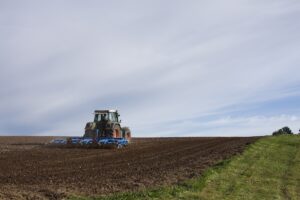The agricultural sector is undergoing a dynamic change, characterized by rising costs of agricultural land, decreasing land supply, and challenging climatic conditions. Despite these complexities, agricultural estates remain an attractive and potentially lucrative investment. Prominent investors view these trends optimistically and anticipate a continued appreciation in the value of agricultural land.
In recent years, there has been a consistent increase in the cost of agricultural land in most regions. This upward trend is driven by a combination of factors, including the growing demand for agricultural products and the limited availability of cultivable land. While the rise in prices poses challenges for new participants in agriculture, it reflects the intrinsic value and enduring attractiveness of agricultural land as an asset class.
Why agricultural lands are a positive investment
Arable land offers various attractive characteristics as an investment:
- Stability in volatile markets: unlike more volatile assets such as stocks or cryptocurrencies, agricultural lands provide a tangible asset with historically stable returns.
- Inflation hedge: Agricultural lands have proven to be a reliable hedge against inflation, preserving capital value even in turbulent economic times.
- Appreciation potential: The limited supply of cultivable land, coupled with the growing demand for food, suggests a long-term upward trajectory in land value.
- Income generation: Agricultural lands can provide consistent income through crop production, leasing, or other agricultural activities.
The decrease in the supply of agricultural lands: a concerning trend.
A key factor influencing agricultural land prices is the decrease in the supply of cultivable land. Urbanization, environmental challenges, and changes in land use have contributed to the reduction of available agricultural lands. This scarcity is particularly severe in regions with high agricultural productivity, making existing agricultural lands more valuable.
Drought in Catalonia and much of Spain: a complicating factor in the situation.
The current drought in Catalonia and much of Spain adds a layer of complexity to the agricultural land investment landscape. Water scarcity and changing climatic conditions are affecting crop yields and the usability of the land, forcing farmers and investors to adapt and innovate. These challenges, while significant, also present opportunities to implement sustainable agricultural practices and efficient water usage technologies.
Optimism in agricultural land investment.
Amidst these challenges, at Agroinversiones Minguet, we emphasize positive aspects. We remain optimistic about the ongoing increase in agricultural land prices and believe that these trends indicate the resilience of the sector and long-term growth potential.
The outlook is encouraging for investors considering agricultural lands as part of their portfolio, suggesting that despite short-term challenges, the fundamentals of agricultural land investment remain robust.
In conclusion: it is a good time to seize investment opportunities in agricultural lands.
The current landscape of the agricultural sector, marked by the rising costs of agricultural lands, limited supply, and environmental challenges, presents a unique set of opportunities for investors. Stability, the ability to hedge against inflation, and appreciation potential make agricultural lands an attractive option for those looking to diversify and strengthen investment portfolios. With strategic planning and a focus on sustainable practices, investing in agricultural lands can be a smart and rewarding venture in the coming years.





